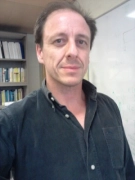 14/03/2024, 17:45 — 18:00 — Online
14/03/2024, 17:45 — 18:00 — Online
Jorge Silva, Instituto Superior Técnico
Convergence of Fourier series and transforms
At the beginning of the 19th century, Fourier revolutionized mathematical analysis by stating, despite the absence of a really rigorous proof, that functions could be represented by trigonometric series, which now carry his name. But up until the first half of the 1960's, when Yuri Gagarin had already orbited the Earth in a spacecraft, and the Beatles and Rolling Stones were global rock superstars, it was still not known whether or not there even existed continuous functions whose Fourier series were everywhere divergent. The first serious proof of convergence of Fourier series is due to Dirichlet, for piecewise monotone functions, soon after Fourier published his famous "Théorie Analytique da la Chaleur" in 1822, starting a surprising and far-reaching history of discoveries and results, that culminated in Lennart Carleson's 1966 proof of the almost everywhere pointwise convergence of Fourier series for $L^2$ functions (including, in particular, continuous functions), known as Lusin's conjecture, that had been an open problem since 1912, when it was first proposed.
In this short presentation, I will give a brief overview of the history of the convergence problems for Fourier series and transforms, and then focus on the problem of weak boundedness of the Carleson operator (which implies the pointwise almost everywhere convergence of Fourier series) by using the modern time-frequency methods of Lacey-Thiele, first used in the 1997 proof of boundedness of the bilinear Hilbert transform, whose study would be a possible topic for a master's thesis.
See also
17H45_JDS.pdf
